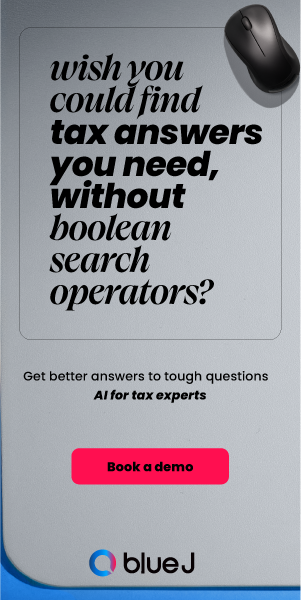When Canadian taxpayers have severe emotional trauma, documentation is key to taxpayer relief requests

The 2025 judicial review of Bifano v Attorney General (2019) demonstrates the need for documentation from psychologists, doctors explains David J Rotfleisch
Introduction: Taxpayer relief and circumstances that led the applicant to seek judicial review
 |
David J Rotfleisch, CPA, JD is the founding tax lawyer of Taxpage.com and Rotfleisch & Samulovitch P.C., a Toronto-based boutique tax law corporate law firm. |
Under the Income Tax Act, the Canada Revenue Agency has the authority to grant taxpayers relief from interest and penalties. Specifically, under s.220(3.1) of the Tax Act, the CRA is given the power to waive or cancel all or any portion of any penalty or interest that is payable under the Tax Act by a taxpayer.
The taxpayer must apply for this relief. IC07 – 1R1 provides guidance on what the CRA considers when looking at applications for taxpayer relief. In particular, there are three general, non-exhaustive categories under which a taxpayer's situation may fall that will warrant a grant of relief.
These categories are: extraordinary circumstances, actions of the CRA, and inability to pay or financial hardship. Relief requests that fall outside these categories may still be granted.
In Bifano v Canada (Attorney General), [2019] FCJ No 617, the applicant, Mr. Bifano, was assessed in his capacity as a director of a corporation for failing to remit payroll taxes. The CRA issued a Notice of Assessment in the amount of $275,787.73 against the Applicant for the 2005 to 2007 taxation years.
In 2005, the Applicant's marriage had ended, causing him stress and emotional trauma.
In 2008, the Applicant's son had died in a farming accident, which was one of the bases for seeking relief.
Relief was requested on the basis of these two events and financial hardship. The CRA denied relief, finding no causal link between the events cited by the Applicant and his failure to make payroll remittances. Ultimately, the Federal Court found that the CRA's decision was reasonable.
This article will focus on taxpayer relief applications as they relate to extraordinary circumstances, specifically emotionally distressing circumstances.
First and Second Review: The CRA denies Mr. Bifano's taxpayer request for relief
To get to the point of seeking judicial review, the taxpayer must first submit a first request for taxpayer relief. If the first request is denied, a second request must be filed. Once the second request is denied, judicial review is available to the taxpayer.
In Bifano, the first request was denied by the CRA on the basis that there was no causal connection between the ending of his marriage and the death of his son to his failure to meet his tax obligations.
The Applicant subsequently made a second request for taxpayer relief, stating that the CRA did not take into account the stress and emotional trauma that he experienced from his separation and the death of his son.
The second-level review was also denied for the same reasons.
Issues before the Court: Standard of review and fettering of discretion
An important issue that the Court considered was whether the decision was reasonable. The standard of review that is applied to the CRA's discretionary power under s.220(3.1) of the Tax Act is reasonableness.
The Court may only intervene if it is found that the CRA's decision was unreasonable. A decision will be unreasonable if it lacks justification, transparency or intelligibility or if the outcome did not fall within the range of possible outcomes based on the applicable laws and the facts.
The Applicant's Position: The decision was unreasonable because the CRA failed to consider his circumstances
The Applicant specifically disagreed with how the CRA considered his divorce and the death of his child. He felt as if the CRA did not give proper weight to those events. One example that is given is how the CRA wrote in its decision that during the period in question, he could have started and continued to run a business and complied with the remittance requirements. The Applicant found this to be unreasonable because the CRA was not taking into account the impact his divorce was having on him at that time.
Similarly, the Applicant argued that the CRA failed to show mercy or justice and did not show any common sense when making the decision. He relied on Kaiser v Minister of National Revenue, [1995] 2 CTC 329 in which the Federal Court stated that the purpose of s.220(3.1) is to allow the CRA to use its discretion to administer the tax system more fairly, by allowing the use of common sense to deal with taxpayers who are not able to meet their tax obligations because of personal circumstances beyond their control.
In sum, the Applicant argued that the CRA failed to use its common sense to determine how his circumstances would have prevented him from meeting his tax obligations under the Tax Act.
The CRA's position: The decision was reasonable and there were no circumstances that would justify relief
The CRA's position that the decision was justified was premised on the fact that the Applicant did not meet the onus of proving that his circumstances prevented him from meeting his obligations and that no other circumstances would justify granting him relief.
In relation to the death of his son, the CRA noted that the tax debt arose in 2006, which was a couple of years before the death of his son.
Prior to his son's death, there was nothing that prevented him from meeting his obligations. The Applicant also had a history of non-compliance and considered the fact that he knowingly let the interest accrue.
Ultimately, the CRA argued that it looked at all the evidence and came to the only justified conclusion, which is that no relief should be granted.
Court's Analysis: The CRA's decision was reasonable and justified
It should be noted that a judicial review is not a chance for the taxpayer to have the Federal Court reweigh the evidence to come to a different conclusion than the CRA. The role that judicial review plays is to examine the CRA's decision to see whether it was based on considerations irrelevant or extraneous to the purpose of s.220(3.1).
The Court in this case noted that the onus of proof is on the Applicant. Therefore, the Applicant is responsible for providing supporting documentation and information to prove a causal connection between his circumstances and his failure to comply with the Tax Act.
When considering the grounds for relief, the Court looked at the evidence that formed the underlying record that informed the CRA's decision. Ultimately, there was no evidence regarding his emotional trauma.
In the absence of evidence, the Court looked at the evidence that supported that he was able to carry on a business and make profits after the divorce. In fact, he still filed GST returns for 2005 and 2006 and also filed a T2 return for his corporation, which reported significant revenue. The CRA concluded that if he had been able to meet other tax obligations, then he would have been able to make payroll remittances. The Court found this result to be reasonable.
In relation to his son's death, the Applicant asked the Court to take judicial notice of the effect a child's death would have on a parent. The Court did not disagree that the death of a child would be devastating, but refused to take judicial notice, as grieving is an individualized experience.
The Applicant argued that the CRA failed to grapple with the evidence and did not use common sense. The Court questioned what evidence there was to consider. The lack of evidence documenting the emotional distress that the Applicant faced led the Court to find that the CRA's decision was reasonable.
Documentation is needed even if common sense would dictate otherwise
This case exemplifies how evidence — typically documentation but possibly expert evidence in some cases — is needed to corroborate statements made in taxpayer relief applications. Application of common sense would show that the Applicant was going through a very emotionally difficult time, and remitting payroll taxes was probably the last thing on his mind.
However, this decision emphasizes that without evidence to support his emotional distress, there is little that can be done to prove how those events prevented him from complying with his obligations under the Tax Act.
Had he had proper evidence, such as a report from a psychologist, the case may not have gone to the point where he needed to seek judicial review.
David J Rotfleisch, CPA, JD is the founding tax lawyer of Taxpage.com and Rotfleisch & Samulovitch P.C., a Toronto-based boutique tax law corporate law firm and is a Certified Specialist in Taxation Law who has completed the CICA in-depth tax planning course. He appears regularly in print, radio and TV and blogs extensively.
With over 30 years of experience as both a lawyer and chartered professional accountant, he has helped start-up businesses, cryptocurrency traders, resident and non-resident business owners and corporations with their tax planning, with will and estate planning, voluntary disclosures and tax dispute resolution including tax audit representation and tax litigation. Visit www.Taxpage.com and email David at david@taxpage.com.
Read the original article in full on Mondaq. Author photo courtesy Rotfleisch & Samulovitch P.C. Title photo from Tingey Injury Law Firm, Las Vegas, NV (2020) on Unsplash.









(0) Comments